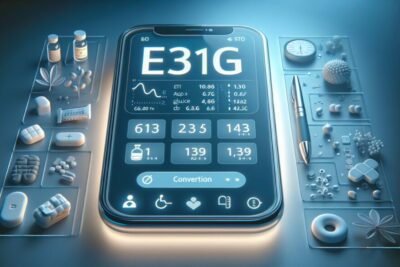
When it comes to managing diabetes, finding the right tools to monitor your blood glucose levels is crucial. A continuous glucose monitor (CGM) can be a game-changer by providing real-time insights into your glucose trends. But with various options available, choosing a CGM that suits your lifestyle and needs requires careful consideration.
The American Diabetes Association (ADA) emphasizes the importance of accurate blood glucose monitoring for effective diabetes management. In this guide, we'll explore the various CGM systems endorsed by the ADA, and provide tips on how to select the best glucose monitor for your individual circumstances.
🔍 Seeking a breakthrough in Type 2 Diabetes management?
Discover our expert insights and innovative approaches on ‘How to Cure Diabetes’.
Click to transform your health journey today!
What you\'ll find in this article?
What is a continuous glucose monitor (CGM)?
A continuous glucose monitor is a device that tracks glucose levels throughout the day and night. CGMs measure glucose in the interstitial fluid under the skin, providing valuable data that can help you and your healthcare provider make informed decisions about your diabetes management.
Real-time CGMs send readings to a display device every few minutes, allowing you to see trends and receive alerts for high or low levels. Intermittently scanned CGMs, on the other hand, require you to scan a sensor to view glucose data.
CGMs are particularly useful for people with Type 1 or Type 2 diabetes who require insulin treatment. They offer the convenience of not having to perform multiple daily fingersticks, which can be both painful and cumbersome.
Explore our specialized services in diabetes care 🌟.
From personalized diet plans to effective exercise routines, we have what you need to take control of Type 2 Diabetes.
Visit our services page now!












Types of continuous glucose monitors
There are two main types of CGMs available: real-time and intermittently scanned systems. Each has its pros and cons, and your lifestyle and diabetes management needs will dictate which is the best fit for you.
Real-time CGMs provide continuous, automatic tracking and alerts, making them a popular choice for those who need close monitoring. Meanwhile, intermittently scanned CGMs are generally more affordable and discreet, though they lack automatic alerts.
How to choose the right CGM for you
Choosing the right CGM involves considering several personal factors, such as your daily routine, comfort with technology, and specific health goals. Discussing with your healthcare provider and comparing different models and features can help you make an informed decision.
Consider the CGM's accuracy, ease of use, sensor lifespan, data sharing capabilities, and compatibility with other devices like insulin pumps or smartphones. Also, think about your own ability to respond to the data provided by the CGM and how it will fit into your diabetes care plan.
Real-time vs intermittently scanned CGMs
When deciding between a real-time and an intermittently scanned CGM, consider your need for constant monitoring versus cost and convenience. Real-time systems offer more immediate feedback and can help with rapid adjustments in your diabetes management.
Intermittently scanned systems, while more cost-effective, require you to actively check your levels, which might not be suitable for everyone. Evaluate the trade-offs to decide which type aligns better with your lifestyle and health needs.
Factors to consider when selecting a CGM
The effectiveness of a CGM in managing diabetes can be enhanced by choosing a device that aligns with your individual needs. Factors to consider include:
- Glucose level accuracy
- Alerts and alarms for glucose variability
- Integration with other diabetes management tools
- Insurance coverage and out-of-pocket costs
Remember, the best glucose monitor is one that you will use consistently and that provides reliable data to support your diabetes management.
Insurance coverage and costs of CGMs
The cost of CGM systems can vary widely, and insurance coverage is a critical factor to consider. Many insurance plans, including Medicare, cover CGMs for individuals who meet certain criteria.
Investigate your insurance plan's coverage for CGM devices and factor in the ongoing costs for sensor replacements and other accessories. Some manufacturers offer assistance programs and discounts that can help make CGMs more affordable.
How do I choose a blood glucose monitor?
Choosing a blood glucose monitor involves evaluating your specific health needs, lifestyle, and budget. Consult with your healthcare professional to understand your monitoring requirements and research the different features offered by various CGMs.
Consider ease of use, data tracking capabilities, and how the device will integrate into your diabetes management routine. Remember to check for insurance coverage to understand the potential costs involved.
Which CGM is most accurate?
The accuracy of CGMs can vary, but most modern devices are quite reliable. It's essential to look for CGMs that have been validated through clinical trials and are FDA-approved.
Read reviews and studies to compare the accuracy of different CGMs and discuss your options with your healthcare provider to determine which device is known for its precision and consistency in monitoring glucose levels.
Is 135 blood sugar high in the morning?
A fasting blood sugar level of 135 mg/dL is generally considered above the normal range and may indicate impaired fasting glucose or diabetes. However, CGMs provide a more comprehensive picture of glucose trends throughout the day and night.
For personalized advice, it's best to consult your healthcare provider, as individual targets can vary based on your overall health status and diabetes management goals.
What is a good number for CGM?
A "good" number on a CGM depends on individualized glucose targets set by you and your healthcare provider. Typically, achieving levels between 70-180 mg/dL for most of the day is a common target for many individuals with diabetes.
CGMs can help you stay within your target range by providing real-time feedback and trends, allowing for more precise management of your glucose levels.
In conclusion, choosing a CGM is a significant decision in managing your diabetes effectively. By researching different types, considering your personal needs, consulting your healthcare provider, and understanding the costs and insurance coverage, you can find the best glucose monitor to support your health goals. Remember, a CGM is a tool that, when used correctly, can provide valuable insights into your glucose patterns and help you maintain better control over your diabetes.
✨ Other articles you might be interested in:
- Exploring the Latest in Diabetes Devices & Technology | ADA
- Choosing Your Reproductive Endocrinologist in Albany, NY for Boston IVF
- IDia – Innovators in Diabetes: Shaping the Future of Care
- Understanding GLP-1 Analogues and Their Role in Diabetes Management
- Understanding Flash Glucose Monitors (Freestyle Libre) and Continuous Glucose Monitors (CGM) in Diabetes Management



